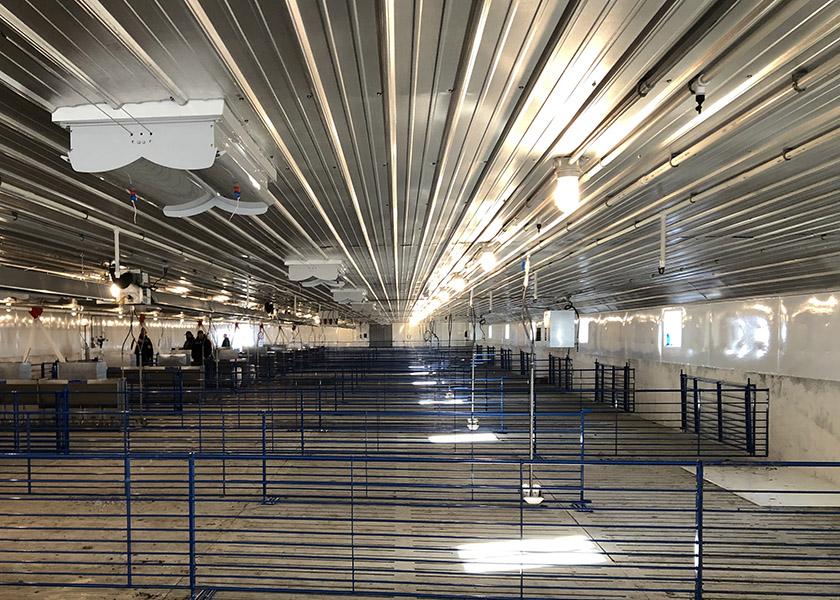New Construction? Consider These 5 Safety and Animal Care Tips

By Paul Ayers, Animal Care Manager, and Darrell Hemker, Associate Director of Safety, for The Maschhoffs
If you want to improve animal well-being and human safety on the farm, start by looking at the overall structure of the facility. Animal handling and movement presents one of the biggest risks for handlers and is the cause for the majority of our human safety incidents.
Focusing on facility design can make animal handling and load-out events safer, more efficient and easier on the animals. Designing and implementing engineering controls to eliminate or reduce potential hazards is much easier than relying on human behavior.
When we build a new barn, we need to think ahead 15 to 30 years. We often focus on what facility improvements can be made to provide a better animal environment and improve production performance; however, we need to ensure facilities also promote human safety and animal well-being down the road.
Taking a holistic approach to building design can ensure our facilities remain sustainable for the future.
Here are five few facility design considerations that we have incorporated at The Maschhoffs:
Lighting
• Ensuring sufficient lighting can help with daily animal observations while also aiding in the sorting, loading and movement of the pigs. Animals and people alike walk easier in well-lit areas than darks areas.
• Providing proper lighting reduces the risk of a slip/trip/fall incident. When we can see a potential hazard, we can avoid it.
Ventilation
• Improvements in ventilation controllers, fans and inlets allows for more precise control of ventilation. The ventilation enhancements benefit the pigs and create a much better work environment for the animal caregivers.
• All new construction includes controllers that can be remotely accessed, allowing for 24/7 monitoring and the ability to respond efficiently to any emergencies or environmental variances.
Load-out Chutes and Walkways
• High-texture flooring within load-out chutes and high animal movement areas is utilized to improve pig handling and reduce the risk of slips/falls.
• Pre-sort pens and wide alleys or “fast lanes” also improve the ease of sorting and pig movement for load-out.
• When designing walkways, avoid 90-degree turns. Animals move better with straight or slightly angled intersections.
Farrowing Rooms
• Heat lamp receptacles with “pigtail” extensions make it easier for employees to reach without climbing on the stalls.
• A durable and well-designed farrowing stall provides optimal sow and piglet comfort and reduces the risk of abrasions or cuts while weaning pigs and power washing. Furthermore, built-in creep mats eliminates the need to handle mats and creep dividers.
Barn Features
• Additional egress and exit doors are designed into the facility so that there are two ways out of an area.
• Fire extinguishers are located throughout the building, especially in areas identified as having a higher probability of a fire, such as near a laundry room, furnace, generator and electrical panel.
• Redundant emergency backup systems such as generators, alarms, curtain drops and back-up thermostats are required to help mitigate the likelihood and impact of any catastrophic events.
While overall barn design and safety considerations are crucial, properly training employees is equally important to promote human safety and animal well-being. Understanding the importance of the building design features and safety equipment, as well as how to effectively utilize the technology, is the perfect formula for avoiding hazards.
Although several of these facility practices have become commonplace throughout the industry, it is important to continue to challenge ourselves to consider human safety and animal welfare as we invest in the next generation of building technology.
More from Farm Journal's PORK:
4 Things to Consider When Handling Heavier Market Hogs







